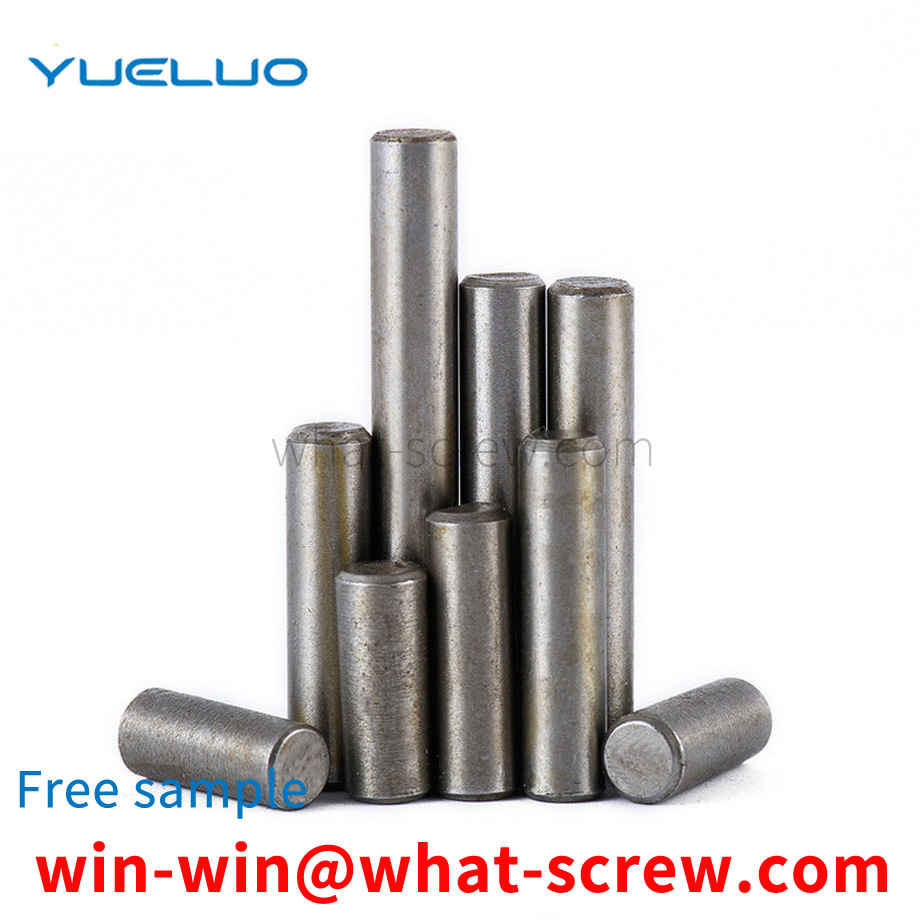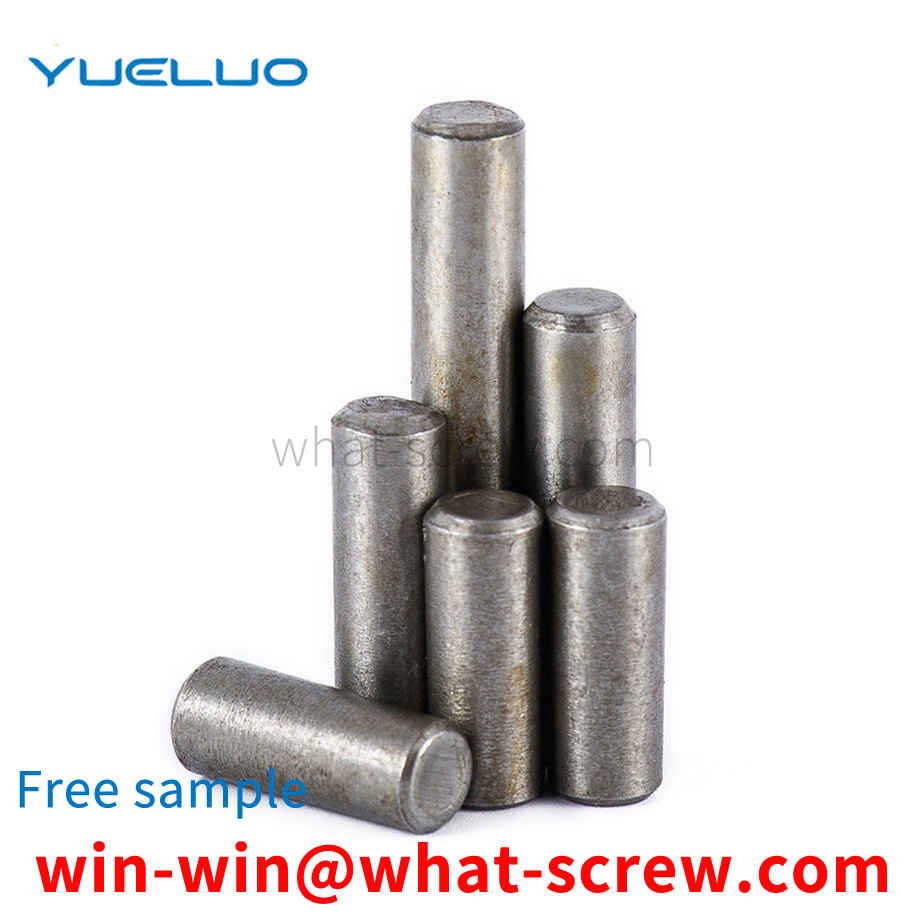At present, with the development of my country's railway industry, many railway fastener systems involve T-bolts. The structure is shown in Figure 1. The dimensions that need to be inspected are head width A, head length B, and head straight table height. C. The height of the head slope D, the total length of the bolt E, and the major diameter of the bolt F. Due to the irregular shape of these places to be inspected, the measurement is difficult. The measurement of general measuring tools is not only slow, but also difficult to control human errors, resulting in some extreme upper limits and There are disputes and misjudgments about the size of the extreme lower limit when judging qualified and unqualified.
The slotted nut mainly refers to the hexagonal slotted nut, that is, the slot is machined above the hexagonal nut. It is used in conjunction with screw bolts with holes and cotter pins to prevent the relative rotation of the bolts and nuts, see GB6178 ~ 6181 and so on.
1. First remove the sludge on the surface of the broken head of the broken screw, use the center gun to kill the center gun of the section, and then use an electric drill to install a drill bit with a diameter of 6-8 mm to drill the hole in the center of the section, pay attention to the hole must be drilled through. After the hole is drilled through, remove the small drill bit and replace it with a drill bit with a diameter of 16 mm, and continue to expand and drill through the hole of the broken bolt. 2. Take a welding rod with a diameter of less than 3.2 mm and use a medium and small current to carry out surfacing welding from the inside to the outside in the hole of the broken bolt. Take half of the entire length of the broken bolt at the beginning of the surfacing welding. When starting the surfacing welding, the arc should not be too long. In order to avoid burning through the outer wall of the broken bolt, surfacing to the upper end face of the broken bolt, and then continue surfacing to weld a cylinder with a diameter of 14-16 mm and a height of 8-10 mm. 3. After the surfacing is completed, hammer the end face with a hammer to make the broken bolt vibrate along its axial direction. Due to the heat generated by the previous arc and the subsequent cooling plus the vibration at this time, the broken bolt and the thread of the body will be loose in between. 4. Carefully observe, when it is found that a small amount of rust leaks from the fracture after the knock, take the M18 nut and put it on the surfacing column head and weld the two together. 5. After welding, use a torx wrench to cover the nut while it is still hot, and twist it back and forth, or tap the end face of the nut with a small hand hammer while twisting back and forth, so that the broken bolt can be taken out. 6. After taking out the broken bolt, use a suitable tap to process the thread in the frame to remove rust and other debris in the hole.
Stainless steel screws are classified into austenitic stainless steel, ferritic stainless steel, martensitic stainless steel, and precipitation hardening stainless steel. The selection of stainless steel screws is also based on principles. Where to start, let you choose the stainless steel screws you need. After comprehensive and comprehensive consideration of these five aspects, the grades, varieties, specifications and material standards of stainless steel screws are finally determined. Austenitic stainless steel: the most basic alloying elements of austenitic stainless steel are chromium and nickel. The grade is a chromium-nickel austenitic stainless steel with a chromium content of about 18% and a nickel content of about 8%, often called 18-8 stainless steel. The element ratio of chromium and nickel basically ensures that the structure of the steel is stable austenitic ferritic stainless steel: 430 type ordinary chromium steel, its corrosion resistance and heat resistance are better than 410 type, magnetic, but it It cannot be strengthened by heat treatment, and is suitable for stainless steel screws with slightly higher corrosion resistance and heat resistance and general strength requirements. Martensitic stainless steel: Type 410 and 416 can be strengthened by heat treatment, with a hardness of 35 to 45HRC, and good machinability. They are used for general-purpose heat-resistant and corrosion-resistant stainless steel screws. Type 416 has a slightly higher sulfur content and is a free-cutting stainless steel. Type 420, sulfur content? R0.15%, improved mechanical properties, can be strengthened by heat treatment, maximum hardness value of 53 ~ 58HRC, used for stainless steel screws requiring higher strength. Precipitation hardening stainless steel: 17-4PH, PH15-7Mo, they can get higher strength than the usual 18-8 type stainless steel, so they are used for high-strength, corrosion-resistant stainless steel stainless steel screws. A-286, a non-standard stainless steel, has higher corrosion resistance than commonly used Type 18-8 stainless steels, as well as good mechanical properties at elevated temperatures. Used as high-strength, heat-resistant, corrosion-resistant stainless steel screws, can be used to 650 ~ 700 ℃. Austenitic stainless steel: The commonly used models are 302, 303, 304, and 305, which are the so-called 18-8 austenitic stainless steels. Both corrosion resistance and mechanical properties are similar. The starting point of selection is the production process method of stainless steel screws, and the method depends on the size and shape of stainless steel screws, and also depends on the quantity of production. Type 302 is used for machined screws and self-tapping bolts. Type 303 In order to improve machinability, Type 303 stainless steel is added with a small amount of sulfur and is used to machine nuts from bar stock. Type 304 is suitable for hot heading stainless steel screws, such as longer gauge bolts, large diameter bolts, which may be beyond the scope of the cold heading process. Type 305 is suitable for cold heading processing of stainless steel screws, such as cold formed nuts, hex bolts. Type 309 and Type 310, their Cr content and Ni content are higher than 18-8 type stainless steel, suitable for stainless steel screws working at high temperature. Types 316 and 317, both of which contain the alloying element Mo, have higher high temperature strength and corrosion resistance than 18-8 type stainless steel. Type 321 and Type 347, Type 321 contains a relatively stable alloying element Ti, Type 347 contains Nb, which improves the intergranular corrosion resistance of the material. It is suitable for stainless steel standard parts that are not annealed after welding or serve at 420~1013℃.
When fixing the centrifugal fan, since the gaskets, washers and nuts are separate parts, many parts are used in the whole process, and it is easy to miss the installation of parts; The volume of the parts is relatively small, and it is not easy to remove them when they are transferred into the air conditioner through the gap of the centrifugal fan blades, resulting in foreign bodies in the machine.
We have many years of experience in the production and sales of screws, nuts, flat washers, etc. The main products are: round head rod screws, aluminum alloy anti-loosening lock nuts, cap-shaped decorative ball head nuts, set combination screw nuts and other products, we can Provide you with the right fastener solution for you.



















 Service Hotline
Service Hotline




